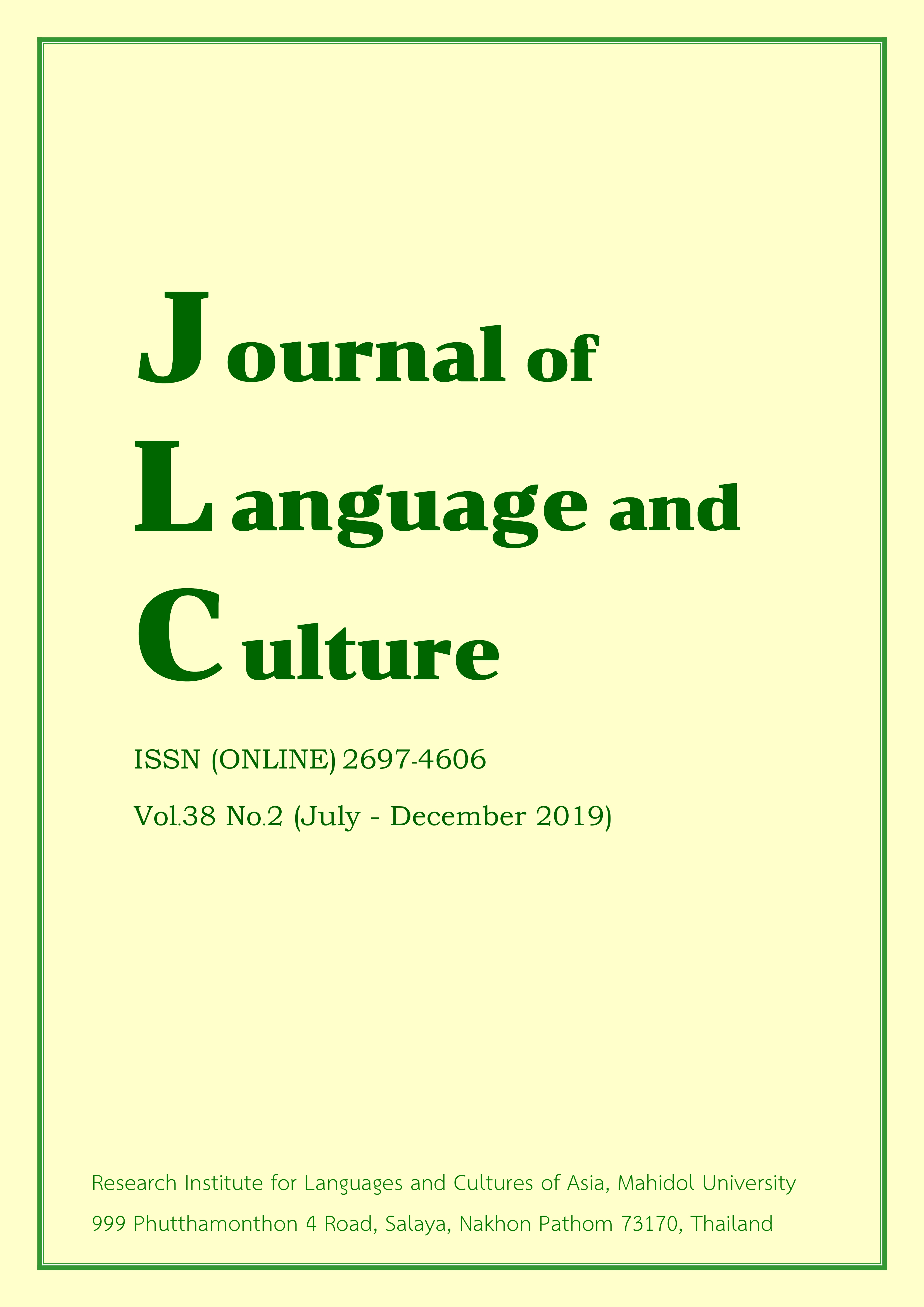Stars & stripes and Union Jack: Exploring the presence of native-speaker cultures in an English major program
Main Article Content
Abstract
As English has become the main language for intercultural communication, cultivating students’ ability to communicate in English with people from differing linguistic and cultural backgrounds is imperative. A current concern of TESOL (Teaching English to Speakers of Other Languages) is the prevalence of the target culture of native-speakers in EFL (English as a Foreign Language) settings despite being questioned by a growing body of literature. This paper presents the results from an exploration of such concern in an English major program at a Thai public university. The data was drawn from a review of curricular documents and photographs of artifacts produced by the members of the program. Consistent with the literature, the results identified a strong linkage between the target language (English) and target culture. The findings support the need for changes in how native-speaker culture should be approached in English major programs and the need for developing English major programs that produce English major graduates who can thrive in the increasingly intercultural age.
Article Details
The articles featured in the Journal of Language and Culture (JLC) constitute academic works representing the viewpoints of the respective author(s). It is crucial to note that these opinions do not necessarily reflect those of the Editorial Board.
All articles published in JLC are released under the Creative Commons Attribution 4.0 International License (CC BY 4.0). This license grants permission for unrestricted use, distribution, and reproduction in any medium, provided proper credit is given to the original author(s) and the source.


